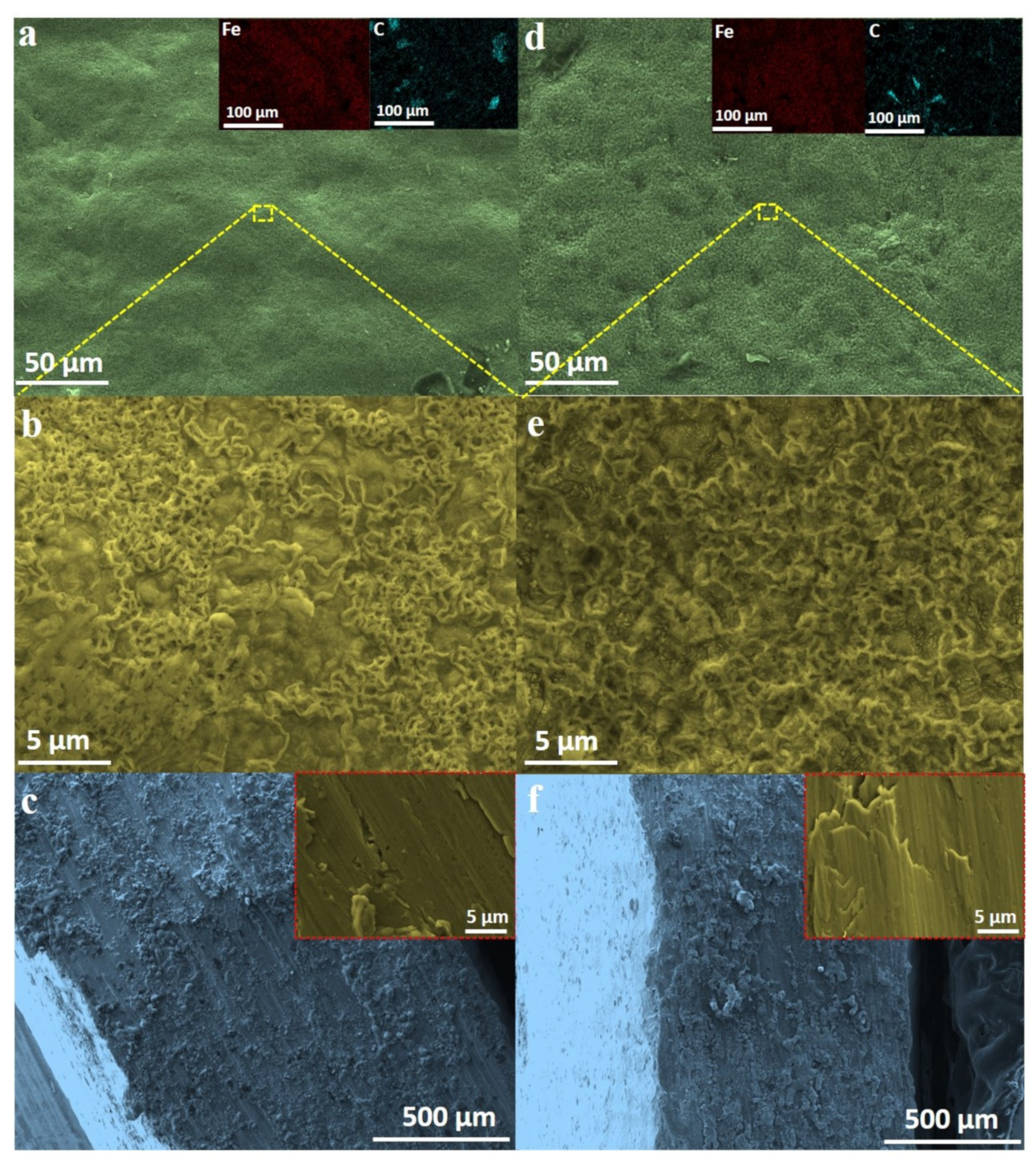Statistical measurements, such as
, RMSE, and an average absolute relative error (AARE), are utilized to verify the developed constitutive equations prediction capability at individual strains for en entire test conditions. The first metric—
describes how the dependent variables are related to the independent variables in terms of prediction strength; the higher value is better in terms of quality of fit. On the other hand, adjusted
explains the model quality based on the number of independent variables used for the model construction. The second metric, RMSE explains the residual locations like how the measured data are diffused to the prediction line; e.g., if RMSE quantity is close to 0, it means the measured data are scattered alongside the regression line or vice versa. The last metric, AARE used to verify the proposed model against the experimental observations considering a term-by-term prediction error [
34,
36].
where
,
,
are the experimental observations, the predicted stress, and the average stress, respectively. It is most common that
adopted to explain the prediction quality of the construted empirical model. However, the higher value of
does not necessarily mean that the model has a better fit, it may be due to the number of data points in the selected samples [
34,
36]. Thus, to confirm the model capability, the graphical validation with systematic comparison was also adopted in this investigation. In this research, to discuss in detail about the prediction strength, an each experimental conditions were examined individually by computing statistical parameters such as
and AARE as summarized in
Table 7.
As outlined in
Table 7, the computed numerical numbers such as
, 0.9817, and AARE, 3.6781%, proves that the proposed constitutive equation is significantly appropriate to represent the material behavior at elevated temperatures; also it is much more suitable for future flow stress prediction at unknown strains. However, from prediction error (AARE), it is identified that there are some difference among the actual test and estimated data in test conditions, 850
C and 950
C (0.05 s
and 0.1 s
). But somewhat, the disparities are considerably adequate as it shows the significant improvement in the overall metrics as summarized in
Table 7. On the other hand, Krishnan et al. [
28] and Lin et al. [
35] demonstrated that with appropriate modification of the
Z parameter considering strain rate compensation, the best prediction for an entire flow stress data can be achieved between flow curves. Thus, the modified
parameter with the multiplication factor
is [
28]
where the material constants
,
n,
Q and ln
A can be estimated from the polynomial equations presented in Equation (
14). In Equation (
22), to find out the best modification parameter, by assuming lower (−) and upper (+) value increments from the middle (0) value,
was replaced by considering three different multiplication factors such as
,
and
. Using Equation (
23), out of these combinations,
was found to have a small prediction error, AARE, as 2.9840%, against experimental data.
Table 8 displays that the prediction capability was found to be adequate by strain rate compensation in the constitutive equation.
Figure 9a–d and
Figure 10a are evident that the developed flow stress equation showed a better resemblance against the actual test data except in the test conditions, 850
C and 950
C at low strain rates. Besides the numerical verification, the graphical methods are developed using the correlation plot, the residual plot, and the histogram plot as depicted in
Figure 10b and
Figure 11a,b, and
Figure 10b is evident that the strong prediction was observed against the measured data. Further, from
Figure 11a, it is noted that the data distribution in the residual plot exhibits the random pattern, indicating a good fit for the proposed constitutive model. In detail, as shown in
Figure 11a, the error distributions are found to be quite irregular in both positive and negative prediction error regions. Moreover, the residuals exhibit no correlation among them; as a result, the proposed constitutive model can not be improved further by the use of any other additional main or interaction effect terms and on the other hand, the developed constitutive equation is considered to be significant for the flow stress prediction.
Besides the residual plot, the error values are plotted to represent the data distribution in a more accurate manner using a histogram plot as illustrated in
Figure 11b.
Figure 11b is more helpful for understanding about how the residuals are spread out in the space and from
Figure 11b, the residuals are identified to fall in a quite acceptable range varies from −8% to 8%. Moreover, from the normal distribution curve, it can be seen that most of the errors fallen inside the range of −5% to 5%, and also the area of probability is not too wide. This graphical evidence suggests that the developed constitutive equation has a significant capability to capture the material ductility behavior at hot operating conditions. Both of the proposed models are displayed an accountable error quantity; because the empirical models do not account the material physical behavior during the excessive deformation and only examine how the data are positioned in the working space. Therefore, a more detailed investigation on the constructed empirical model is required before drawing any reliable conclusions on the proposed constitutive model. However, overall, the estimated prediction error proves that the modified equation provides a better correlation than that of the conventional constitutive equation.


















